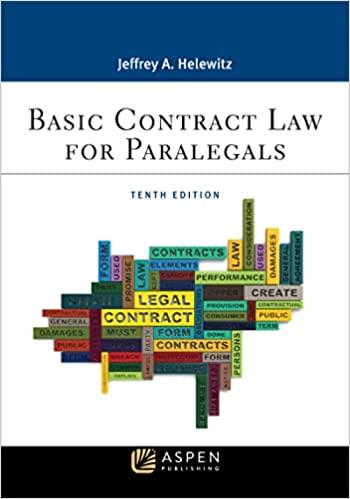Question
4-2 Discussion Contains unread postsKai Sears posted Nov 16, 2021 3:59 PM Subscribe In the case of Garner vs. Higgins, Maureen Garner, the plaintiff, is
4-2 DiscussionContains unread postsKai Sears posted Nov 16, 2021 3:59 PMSubscribe
In the case of Garner vs. Higgins, Maureen Garner, the plaintiff, is arguing that the defendant, Samuel Higgins, has infringed on her patented process of cataloging/customizing the online selling of shoes. The rule of law this case is demonstrating is patent law. The case supports this rule of law by determining if Samuel Higgins has infringed on Marine Garner's patent and if Marine Garner's patent can be considered valid.
In this case, the criteria for Maureen Garner's patent that seemed to be lacking included a patent's requirement to be novel and nonobvious. For the requirement of being novel, which requires the patented idea/process/product to be new, Garner's patent, as she even admitted herself, was very similar to already existing processes of cataloging/customizing customer information for online retailing used by other companies (Kubasek et al., 2020, p. 312). This evidence supports the lack of her patented invention being new since many other companies are already using her idea. For the criteria of being nonobvious, which requires the patented invention to not be easily discovered/created by a person of ordinary skill in the industry, Garner's patent did not seem to meet this criterion because many other companies, including Samuel Higgins, had already discovered/created this invention (Kubasek et al., 2020, p. 312). Therefore, supporting the notion that the process of cataloging/customizing customer information for online retailing can be discovered/created by a person of ordinary skill in the industry.
Furthermore, the judge decided that while the defendant did infringe on the plaintiff's patent, the patent itself was invalid, and therefore, the defendant would not have to change his business practices in any way. The judge decided that the defendant infringed upon the plaintiff's patent because she found the process of cataloging/customizing customer information for online retailing that he used to be very similar, if not the same, to the plaintiff's patented process. Her reasoning also included that, whether he intentionally did this or not, there would still be an infringement. Despite this finding, the judge's ruling of the plaintiff's patent to be invalid, due to a lack of meeting the novel and nonobvious requirements of a patent, meant that the defendant was found to be not guilty and would not have to change his business practices. I do agree with the judge's decision because the plaintiff did not have a valid patent to begin with, and therefore, an infringement on the patent should not be possible. The main reason I agree with the judge is because I believe she correctly ruled/identified the lack of the novel and nonobvious requirements necessary for the plaintiff's patent to be valid.
Citations:
Kubasek,N., Browne,M.N., Dhooge,L.J., Herron,D.J., Williamson,C., & Barkacs,L.L. (2020).Dynamic business law(5th ed.).
need a reply to this discussion
Step by Step Solution
There are 3 Steps involved in it
Step: 1

Get Instant Access to Expert-Tailored Solutions
See step-by-step solutions with expert insights and AI powered tools for academic success
Step: 2

Step: 3

Ace Your Homework with AI
Get the answers you need in no time with our AI-driven, step-by-step assistance
Get Started


